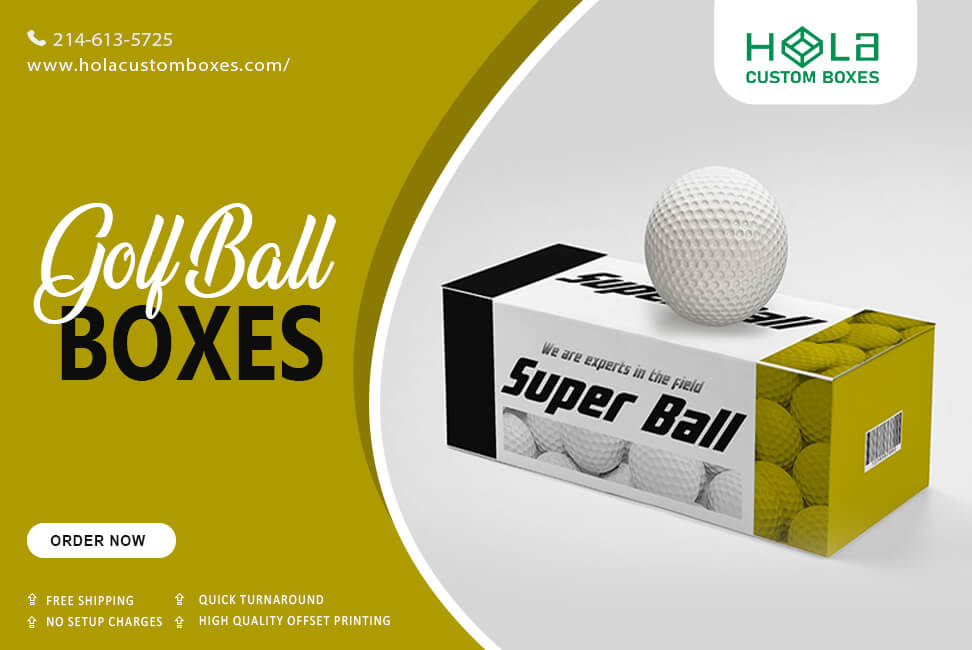Staying in the Fairway: Navigating Regulations in Golf Ball Packaging
2026-01-02 20:46:03
Looking to hit a hole in one with your golf ball packaging? Then it's time to tee up and navigate the challenging fairway of regulations.
In this article, we'll guide you on how to stay in bounds and avoid penalties by understanding and adhering to the rules. From child safety considerations to environmental mandates, we'll explore the key regulations that impact the sports industry.
So grab your clubs, tighten your grip, and get ready to swing into compliance!
Key Takeaways
- Compliance with regulations in golf ball packaging is crucial to avoid penalties and legal issues.
- Balancing compliance and innovation enables creative, sustainable packaging solutions.
- Eye-catching and unique packaging helps differentiate golf ball brands and influences consumer purchasing decisions.
- Implementing sustainable packaging practices, such as using recyclable materials and reducing waste, enhances brand image and reflects brand values.
The importance of understanding and adhering to regulations

Golf ball manufacturers must understand and comply with regulations to avoid penalties or legal consequences.
Consumer trust, legal consequences, and product quality are all at stake when it comes to following packaging regulations. Golfers rely on the quality and performance of their golf balls, and any deviation from rules could result in a loss of consumer trust.
Additionally, failing to comply with packaging regulations can lead to legal consequences, including fines or even lawsuits. By ensuring that their packaging meets all necessary standards, golf ball manufacturers can maintain the integrity of their products while also protecting themselves from potential legal issues.
With this understanding, let's now move on to an overview of the major packaging regulations relevant to the sports industry.
Overview of major packaging regulations relevant to the sports industry
Several major packaging regulations are relevant to the sports industry. To ensure compliance, it's essential to understand and adhere to these regulations.
The following is an overview of three key aspects:
Product labeling requirements: Sports products must have clear, accurate labels that provide essential information, including ingredients, usage instructions, and potential hazards.
Packaging material restrictions: Certain materials, such as hazardous substances or non-recyclable plastics, may be prohibited or restricted in the sports industry due to environmental concerns.
Safety testing and certification: Sports products must undergo rigorous testing to ensure compliance with safety standards and certifications before being sold in the market.
Understanding and adhering to these packaging regulations is crucial for businesses operating in the sports industry. It helps protect consumers from potential risks and ensures compliance with legal requirements.
When considering child safety considerations...
Child safety considerations
Child safety is an essential consideration in the design and manufacture of sports products. Companies must address product liability concerns and ensure their packaging is child-resistant. This means creating packaging that is difficult for children to open, reducing the risk of them accessing potentially dangerous items.
Additionally, age restrictions should be implemented to prevent young children from using products unsuitable for their age group. These measures not only protect children from harm but also help companies avoid potential product liability issues.
Moving forward, it is equally important for companies to incorporate environmental and sustainability mandates into their packaging designs, ensuring compliance with regulations while minimizing ecological impact.
Environmental and sustainability mandates

To meet environmental and sustainability mandates, ensure your packaging designs comply with applicable regulations while minimizing their environmental impact. Here are some key considerations for achieving this:
Carbon footprint reduction: Look for ways to decrease the emissions associated with your packaging, such as using more efficient manufacturing processes or sourcing materials locally.
Recycling initiatives: Design your packaging to be easily recyclable, using materials accepted in recycling programs, and clearly label them as such.
Renewable packaging materials: Explore alternatives such as bio-based plastics or plant-based fibers to replace traditional non-renewable materials.
By incorporating these strategies into your packaging designs, you can demonstrate your commitment to environmental responsibility while meeting regulatory requirements.
Now let's delve into how regulations influence design and material choices.
Interactive Packaging for a Memorable Unboxing
A truly unforgettable unboxing experience comes from more than just the product itself—it’s about how it’s revealed. Interactive packaging can transform a simple box into an engaging experience. Imagine opening a custom action figure package with hidden compartments, surprise accessories, or unique reveals built into the design. This interactive element not only protects the figure but also creates excitement, anticipation, and joy, making the unboxing moment one that collectors will remember and cherish.
Limited Edition Packaging to Elevate Value
Limited edition packaging adds exclusivity and collectibility to action figures. With specially designed boxes featuring unique artwork, premium finishes, or rare design elements, collectors instantly feel that they own something extraordinary. This thoughtful presentation enhances the item's perceived value and makes the unboxing feel personal and special. When extra effort is put into packaging, it elevates the entire experience, turning an action figure into a treasured collectible without compromising its authenticity or integrity.
Recommendations for staying compliant
By following these guidelines, you can ensure that your packaging choices align with regulations and keep your products safe for consumers. Staying up to date with regulatory updates is crucial in maintaining compliance. Keep yourself informed about any changes or new requirements that may affect your packaging design or materials.
It's also important to follow industry best practices for packaging and labeling. By doing so, you can stay ahead of the game and avoid any potential issues down the line.
Implementing effective compliance strategies will help you navigate through the complex world of regulations with ease. These strategies may include conducting regular audits, establishing internal controls, and working closely with regulatory experts.
Remember, staying compliant not only protects your business but also ensures your customers' safety.
As you consider the recommendations for staying compliant in golf ball packaging, it's essential to strike a balance between creativity and compliance.
The balance between creativity and compliance
As you wrap up your considerations on striking a balance between creativity and compliance, remember that finding the right mix is key to successfully meeting regulatory requirements while also standing out in the market. The challenges of creativity in packaging within regulated industries can be daunting. However, it is crucial to stay ahead of the curve by embracing innovative design elements while adhering to industry guidelines. This balance is essential because it not only ensures compliance but also has a significant impact on the industry as a whole. By pushing creative boundaries, companies can set new standards and influence consumer perceptions. It is essential to understand that finding this equilibrium may require some trial and error. Still, ultimately it will lead to successful products that both comply with regulations and captivate consumers.
| Creativity Challenges | Industry Impact |
|---|---|
| Meeting regulations | Setting new standards |
| Innovative design | Influencing perception |
By juggling these two aspects effectively, brands can navigate the complex world of packaging regulations without compromising their creative vision or losing touch with consumer preferences. Remember that being compliant does not mean sacrificing innovation; instead, it means finding innovative ways to meet regulatory requirements while still delivering unique and eye-catching packaging solutions. Striking this balance requires continuous evaluation and adaptation as regulations evolve. Keep an open mind, explore possibilities within the boundaries set forth by regulators, and stay informed about industry trends to ensure your packaging stands out from the competition while remaining compliant.
| Consumer Perception |
|---|
| Unique |
| Eye-catching |
Conclusion
Now that you've explored the regulations surrounding golf ball packaging, it's clear how vital it is to understand and adhere to these guidelines.
By ensuring compliance with child safety considerations and environmental mandates, you can navigate the packaging landscape successfully.
Remember, regulations influence design and material choices, so staying informed is key.
As you strive for creativity in your packaging solutions, always keep in mind the delicate balance between innovation and following the rules.
With this knowledge, you can confidently create packaging that not only meets regulations but also captivates consumers.
Keep swinging towards compliant success!
